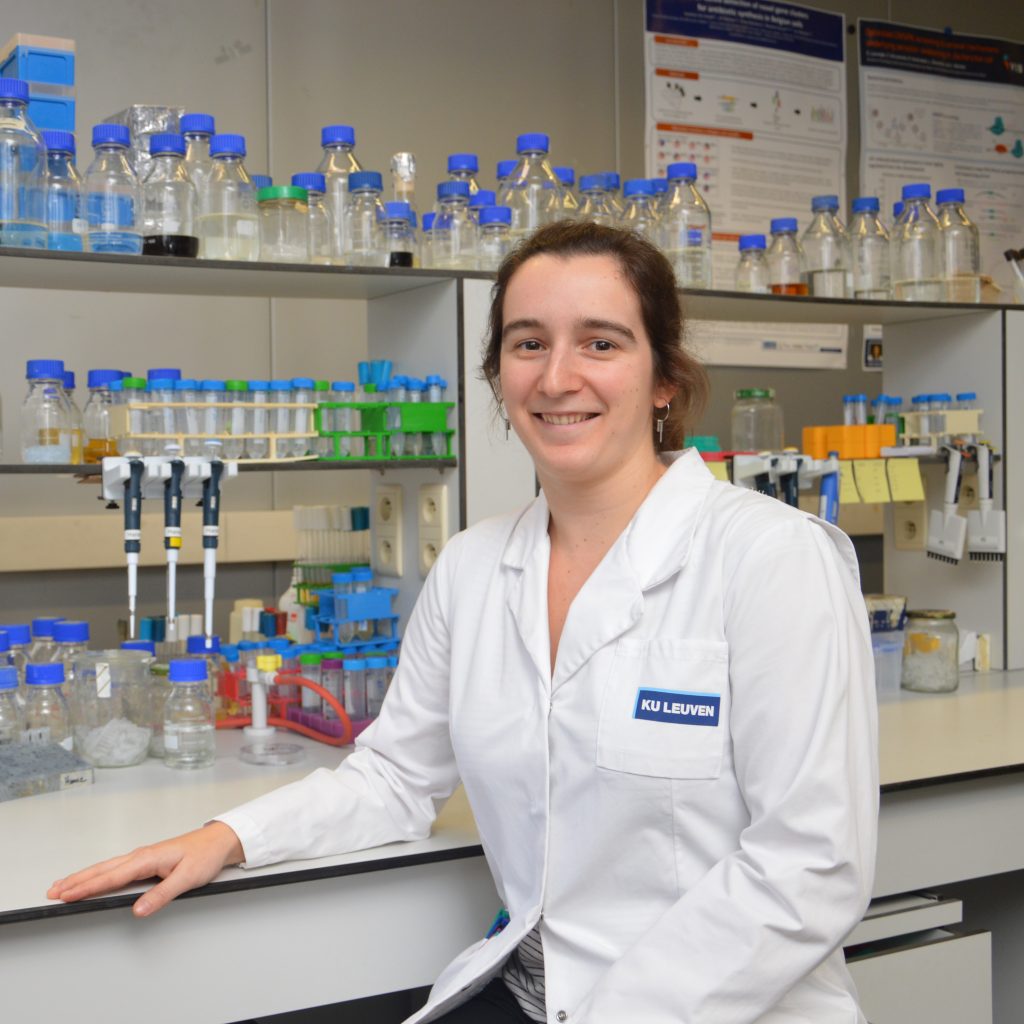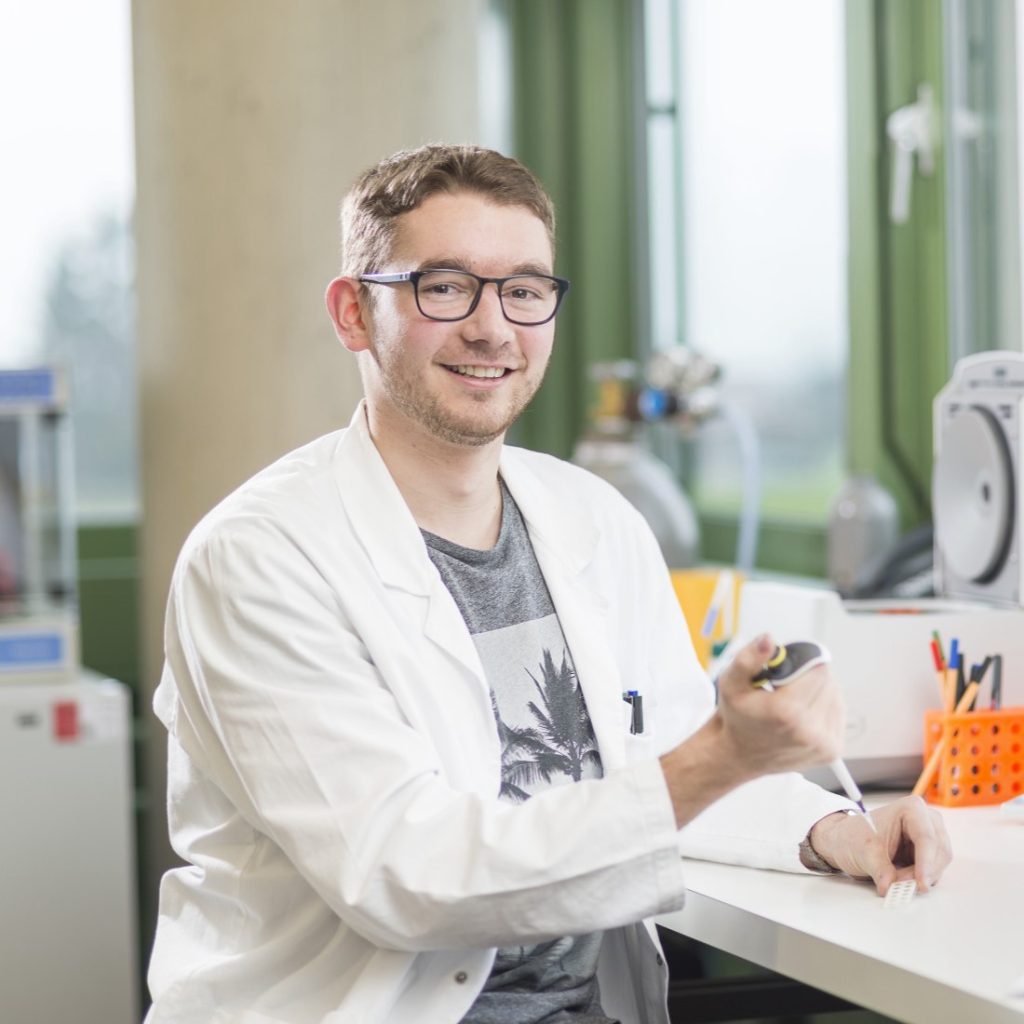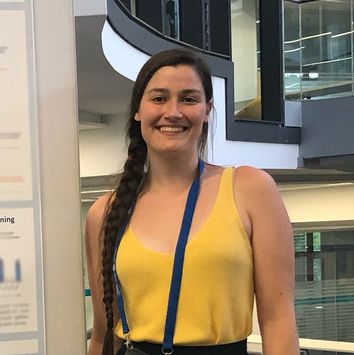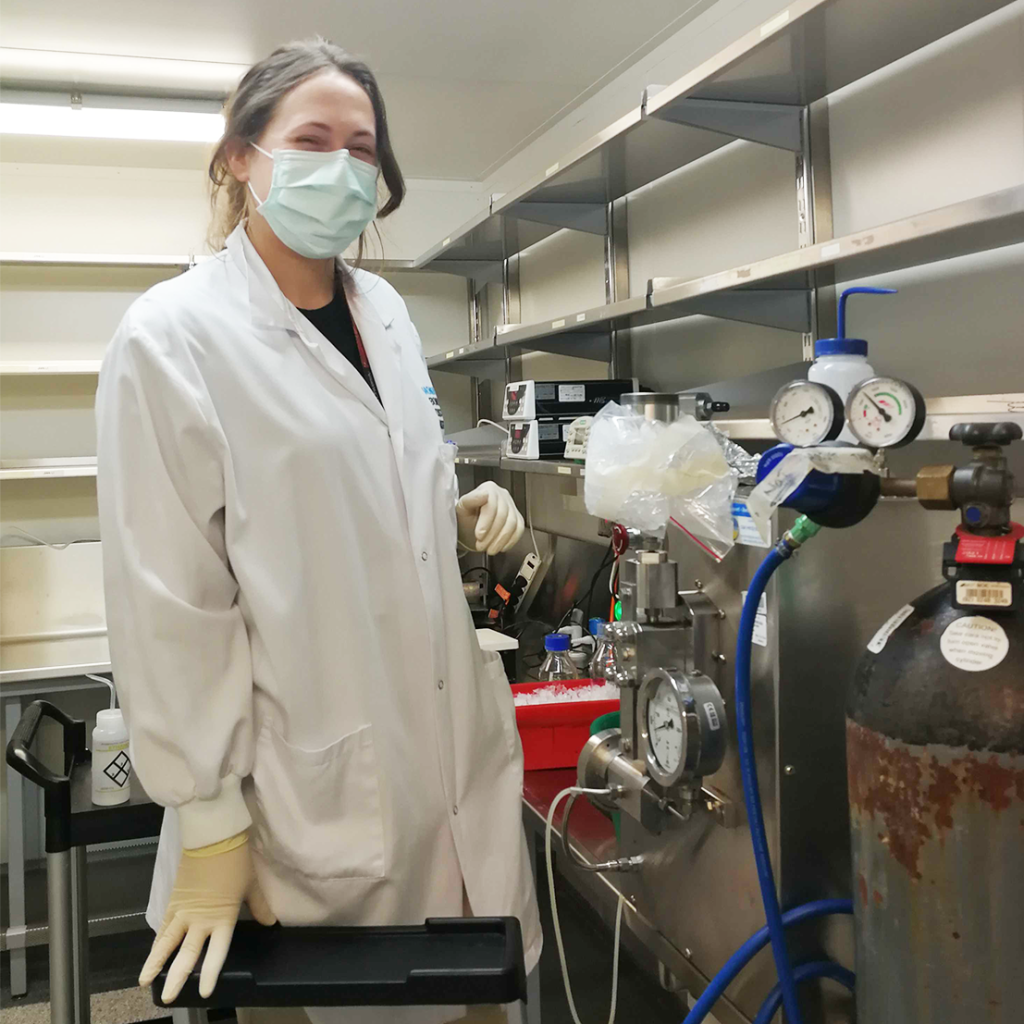Best poster prize winners at ‘New approaches and concepts in microbiology’
Since 2013, this symposium has become a must-attend event for scientists working with bacteria and new technologies. For the past 10 years, the focus of the meeting has remained on the interface of new technologies and new biology in bacteria, but the thematic areas change and speaker line-ups do not overlap between consecutive symposia. This year we welcomed 308 onsite and 90 virtual participants of which five won best poster prize! Here we present the winners🎖️. Take a look!
Persister and viable but nonculturable cells are characterized by proteome-wide aggregation
Presenter: Celien Bollen, KU Leuven, Belgium

Abstract: Chronic infections impose a major burden on human health and their incidence has often been attributed to the presence of dormant bacteria. Dormant bacteria display reduced metabolic activity, which makes them tolerant to antibiotics due to inactivity of antibiotic targets. Importantly, these dormant cells can recover and regrow after the antibiotic treatment and thereby cause a relapse of infection. We have previously shown that persisted cells adopt a shallow level of dormancy from which they can wake up easily, while viable but non-culturable (VBNC) cells reside in a deeper dormant state and need a specific trigger to regrow. Both of these dormant states are strongly correlated to the presence of protein aggregates and the extent of protein aggregation appears to determine dormancy depth. However, more insight into the link between dormancy and protein aggregation is needed to determine a causal relationship. We hypothesize that aggregates might sequester important proteins in the cell and that the depletion of these proteins might lead to inactivation of essential pathways and the induction of dormancy. To test this hypothesis, we determined the exact composition of the aggregates in various strains with different aggregation and dormancy phenotypes. Some of the selected strains only affect dormancy or aggregation while others influence both. Our results indicate that aggregates contain a wide diversity of proteins and that the composition of the aggregates, rather than their presence in the cell, might determine dormancy development. In the future, it will be important to determine the causal relationship between the depletion of specific proteins or protein classes and the induction of dormancy. These insights into the link between protein aggregation and dormancy can inspire the development of therapies against dormant cells.
Poster not available due to unpublished data
Mapping the pneumococcal genome-wide interaction network with dual CRISPRi-seq
Presenter: Julien Dénéréaz, University of Lausanne, Switzerland

Abstract: Three quarters of the genes encoded by the human pathogen Streptococcus pneumoniae are non-essential, suggesting that many functions have genetic redundancy. To identify genetic interactions on a genome-wide scale, we developed and constructed a dual IPTG-inducible pooled CRISPR interference library in the pneumococcal strain D39V. Two sgRNAs were combined, reaching a total of 378’015 unique targeted operon combinations, and covering more than 70% of all genetic elements in the genome. This dual sgRNA CRISPRi library allowed us to explore the genetic interactions in S. pneumoniae in a competitive growth assay. After growing the library with and without inducer over 15 generations, we sequenced both sgRNAs to evaluate the fitness of the sgRNA combinations. We identified 4924 negative genetic interactions, in which the simultaneous presence of both sgRNAs resulted in growth disruption. Additionally, we found 1709 positive interactions, where the growth impairment caused by one of the sgRNA targets was remedied when the second sgRNA was present. Genetic interactions already known in the existing literature were confirmed, such as smc-hlpA, pbp1a–pbp2a and mltG-pbp2b. We identified several novel genetic interactions involving genes responsible for key cellular processes such as cell division, cell shape, and chromosome segregation. These findings have shed light on some genes whose functions were previously unknown, providing clear targets for upcoming functional studies. Furthermore, we highlighted several genetic interactions linking cell division and chromosome segregation, confirming the dependency between these two processes. Understanding these processes in S. pneumoniae is crucial for identifying novel antibiotic targets, and for the development of combinatorial therapy strategies for extending the lifetime of currently used antibiotics.
The defense island repertoire of the Escherichia coli pan-genome
Presenter: Dina Hochhauser, Weizmann Institute of Science, Israel

Abstract: It has become clear in recent years that anti-phage defense systems cluster non randomly within bacterial genomes in so-called “defense islands”. Despite serving as a valuable tool for the discovery of novel defense systems, the nature and distribution of defense islands themselves remain poorly understood. In this study, we comprehensively mapped the defense system repertoire of >1,300 strains of Escherichia coli, the most widely studied organism for phage-bacteria interactions. We found that defense systems are usually carried on mobile genetic elements including prophages, integrative conjugating elements and transposons, which preferentially integrate at several dozens of dedicated hotspots in the E. coli genome. Each mobile genetic element type has a preferred integration position but can carry a diverse variety of defensive cargo. On average, an E. coli genome has 4.7 hotspots occupied by defense system-containing mobile elements, with some strains possessing up to eight defensively occupied hotspots. Defense systems frequently co-localize with other systems on the same mobile genetic element, in agreement with the observed defense island phenomenon. Our data show that the overwhelming majority of the E. coli pan-immune system is carried on mobile genetic elements, explaining why the immune repertoire varies substantially between different strains of the same species.
Pooled CRISPRi screening reveals persister formation and recovery mechanisms in Escherichia coli
Presenter: Elen Louwagie, KU Leuven, Belgium

Abstract: Persister cells comprise a small fraction of phenotypic variants in a bacterial population that are able to survive antibiotic treatment, because they find themselves in a temporary highly tolerant, often non-growing, state. After antibiotic removal, these persisters can recover, regrow and eventually cause infection relapse. As such, persister cells can underly antibiotic therapy failure and thus the chronic nature of several hard-to-treat infections. In addition, the survival of persister cells facilitates the development of resistance. Despite their clinical significance, the landscape of persister formation and recovery mechanisms remains largely elusive. Therefore, we performed pooled CRISPR interference (CRISPRi) screening experiments to identify genes important for persister formation on the one hand, and persister recovery and regrowth on the other hand. CRISPRi involves using deactivated Cas9 (dCas9) that hinders transcription at a targeted site in the genome with the help of a single-guide RNA (sgRNA). We have an sgRNA plasmid library at our disposal that contains around 60,000 sgRNAs, allowing for genome-wide gene silencing. This pooled CRISPRi plasmid library was transferred to E. coli MG1655 that expresses dcas9 from the chromosome, controlled by the tightly inducible PTET promoter. Next, the library was grown until stationary phase and subjected to ciprofloxacin treatment, after which the surviving cells were transferred to fresh medium. Depending on the focus of the experiment, either persister formation or recovery, the inducer of dCas9 production was added during the growth step prior to antibiotic treatment, or during the recovery and regrowth phase after treatment, respectively. End-point and over-time sampling, followed by NGS sequencing and in-dept data analysis revealed significant changes in sgRNA levels, and thus the importance of different gene products, during the processes of persister formation, recovery and regrowth. Genes involved in active metabolism and biosynthesis pathways were identified as repressors of persister formation, while DNA repair and replication seem to be important during both formation and recovery. Validation of the top hit genes could eventually drive the development of anti-persister drugs to effectively clear chronic infections.
Poster not available due to unpublished data
A group of temperate bacteriophages equip their Klebsiella hosts with potent interbacterial weapons
Presenter: Sally Byers, Monash University, Australia

Abstract and poster not available due to unpublished data